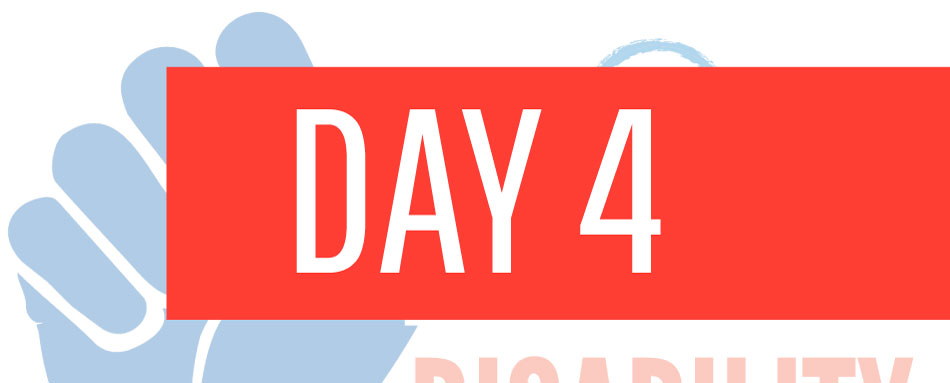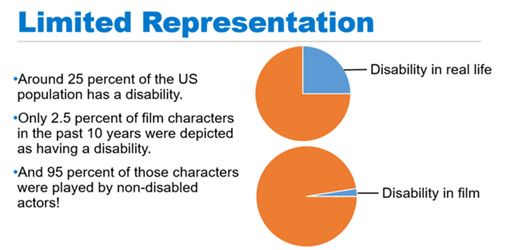
Representation Matters!
According to the Centers for Disease Control, approximately 26%, or one quarter, of adults in the United States have a disability. However, a recent study found that only 2.5% of film characters in the previous 10 years were depicted as having a disability. A lack of visibility in mainstream media contributes to marginalizing people with disabilities. The percentage of characters with disabilities who are also part of another marginalized group based on race, religion, sexuality, or gender is even smaller.
On the rare occasion that someone with a disability is part of a cast, it’s very likely that their disability is part of the plot – if Hollywood doesn’t have a reason to include a person with a disability, they generally don’t. All too frequently, when people with disabilities are represented in the media they are stereotyped as villains, victims, heroes, or objects of inspiration. These stereotypes can lead to a misconception that people with disabilities are all the same, negatively impacting the lives of real people with disabilities.
Perhaps more insulting is the fact that 95% of the limited number of disabled film characters are played by non-disabled actors. The fact that disabled characters are rarely portrayed by disabled actors can lead to a belief that people with disabilities can’t act and have no place in the media industry, resulting in employment discrimination.
Another area where disability is often poorly represented in the media is in the news and journalism sector. Too often, the journalistic depiction of disability is based in pity, remorse, or inspiration and/or the language used is demeaning and disrespectful. The National Center on Disability and Journalism provides a useful Disability Language Style Guide on their website. (https://ncdj.org/style-guide/)
There’s no question that media has a huge impact on people’s perceptions. People with disabilities deserve an accurate representation.

Read
- Death by a Thousand Words: Covid-19 and the Pandemic of Ableist Media
https://www.refinery29.com/en-us/2021/08/10645352/covid-19-and-the-pandemic-of-ableist-media
- Disability Visibility Project: Felt Half Seen
https://disabilityvisibilityproject.com/2020/07/28/felt-half-seen/
- Vanessa Vickery: Borderline, Reflected
https://medium.com/badvocals/borderline-reflected-7515469db8a0

Listen
- NPR: Maysoon Zayid: Should Humor Make Us Uncomfortable? (12:00)
https://www.npr.org/2017/03/24/520942616/maysoon-zayid-should-humor-make-us-uncomfortable
- (transcript) https://www.npr.org/transcripts/520942616)

Watch
- LISTEN (video) (13:59)
https://www.youtube.com/watch?v=2XZFNZBwsAwle
- #IAmNotYourVillain (3:04, includes captions)
Discussion
- Can you think of two movies or shows that have included a person with a disability when the person’s disability was not integral to the story?
- How do you think people with disabilities being more equitably represented in the media would affect our society’s general perception of disability?
- What do you think about non-disabled people playing the roles of people with disabilities? Why do you think non-disabled actors are more likely to be cast as disabled characters?
- Think about your favorite TV show. Do 25% of the characters have some form of disability? How might having more characters with disabilities change the show?
Image/Visual

[Image description: Two pie charts titled “Limited Representation” depicting and stating the following statistics: 1) Around 25% of the US population has a disability; 2) Only 2.5% of film characters in the past 10 years were depicted as having a disability; 3) 95% of those characters were played by non-disabled actors.]










